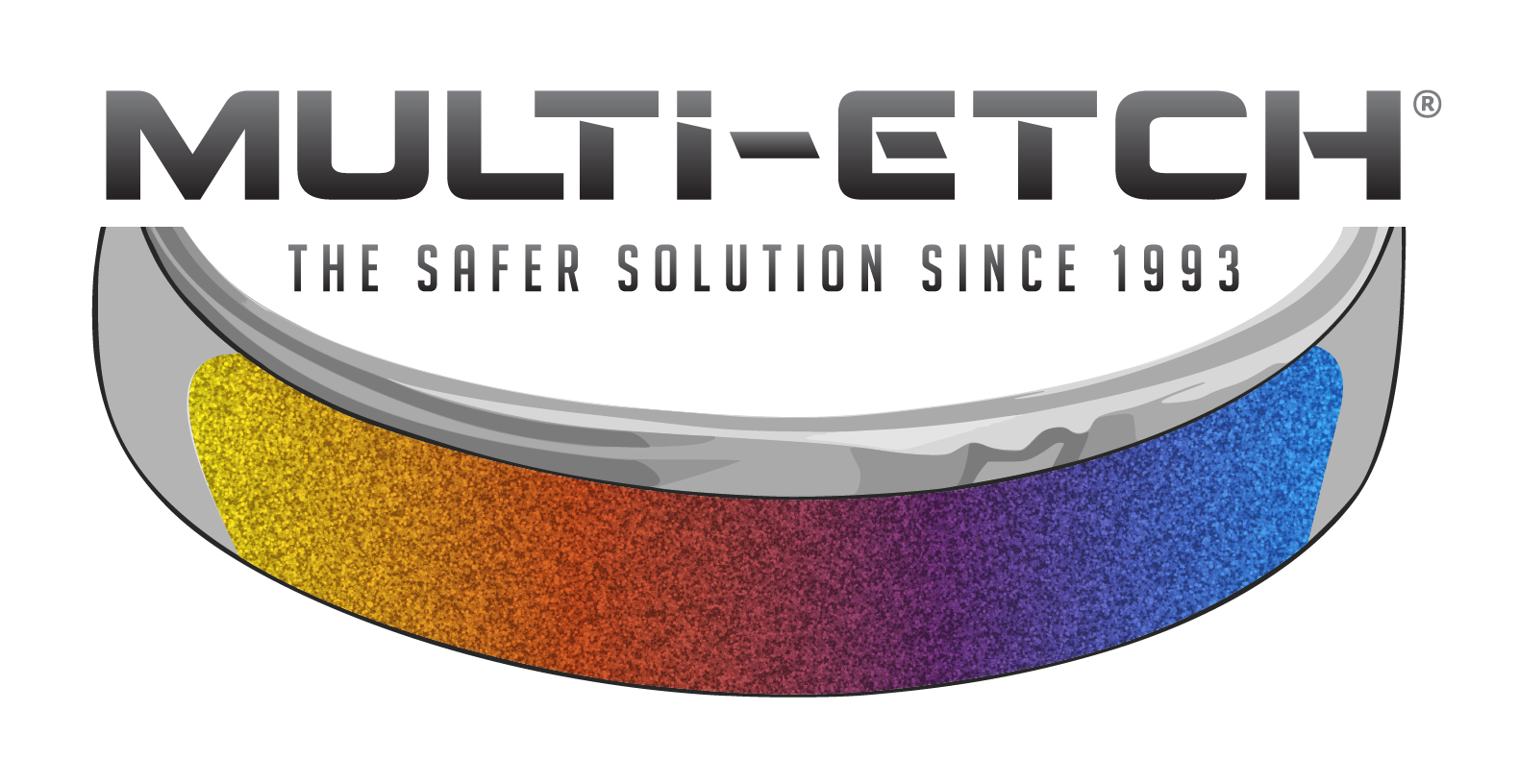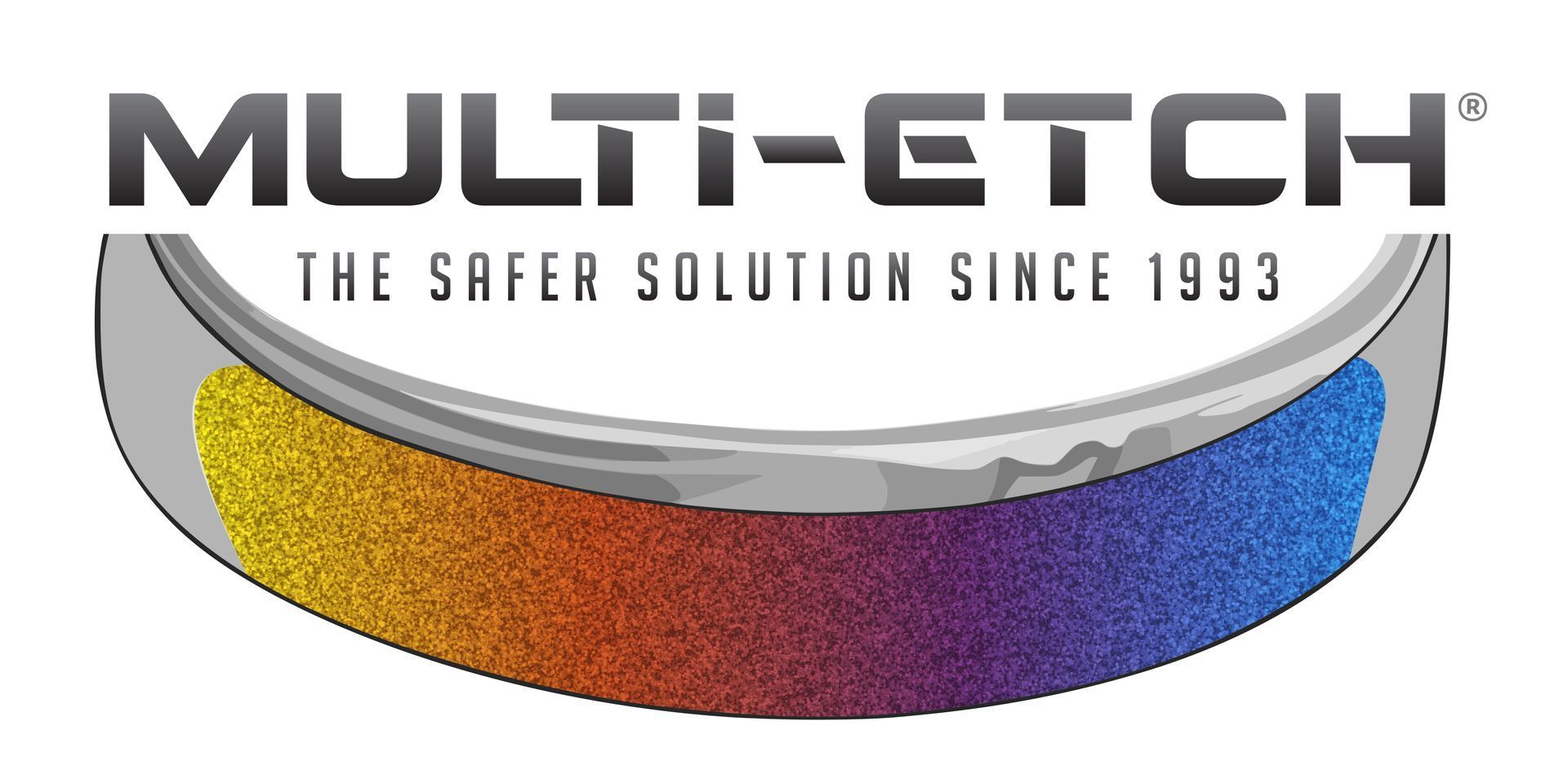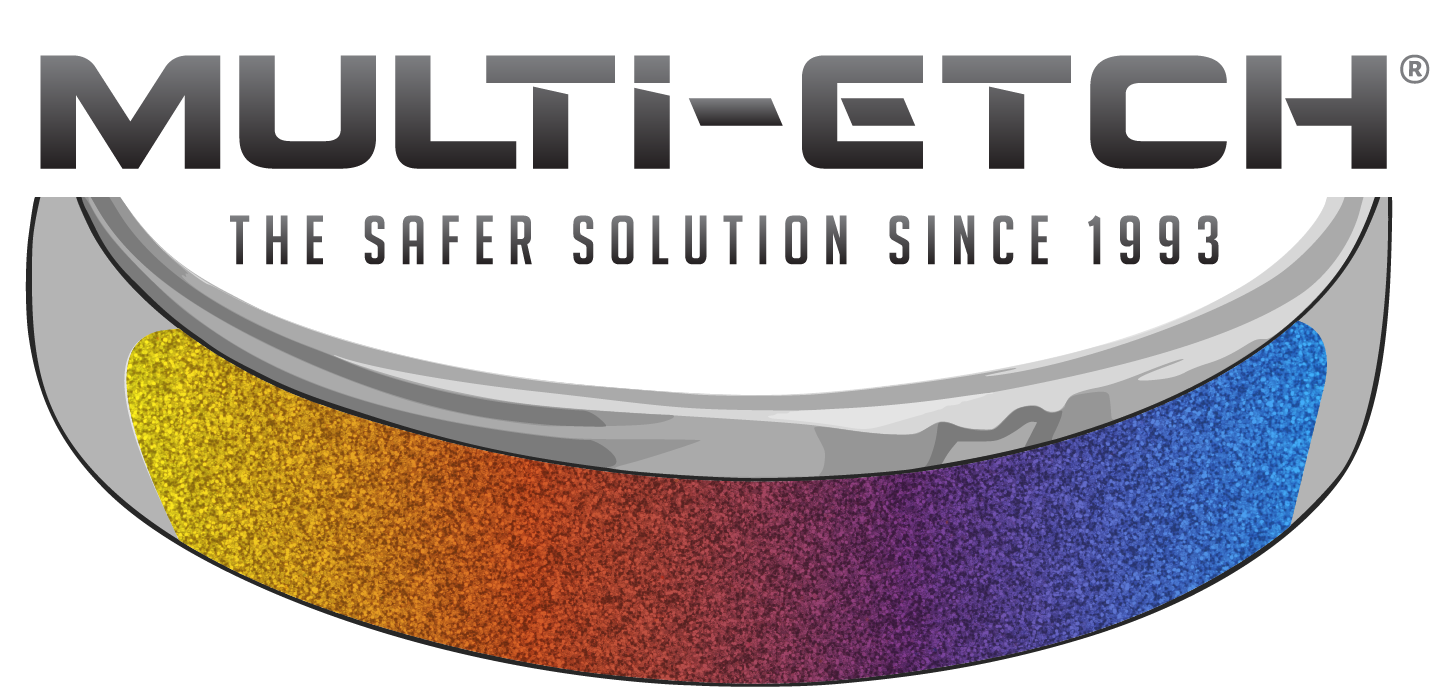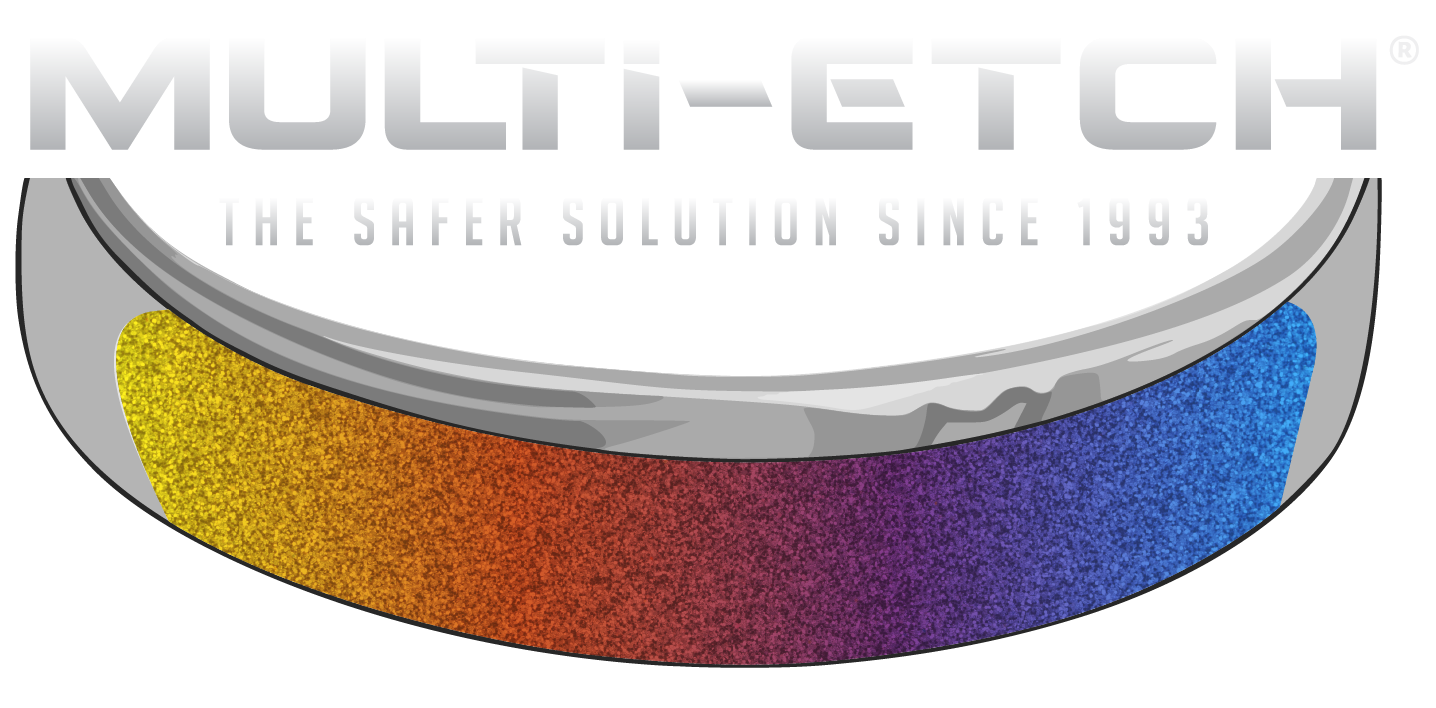ROOM TEMPERATURE
ROOM TEMPERATURE
We recommend using Multi-Etch heated because it’s faster, but etching at room temperature is as effective, just a little slower. Apart from the power supply (anodizer), small-scale etching and anodizing set-ups can be assembled for less than $50, with everything available from big box retailers.
When using Multi-Etch at room temperature, etch times will be around 2+ minutes and could speed up slightly over time as the bath gets fully activated.
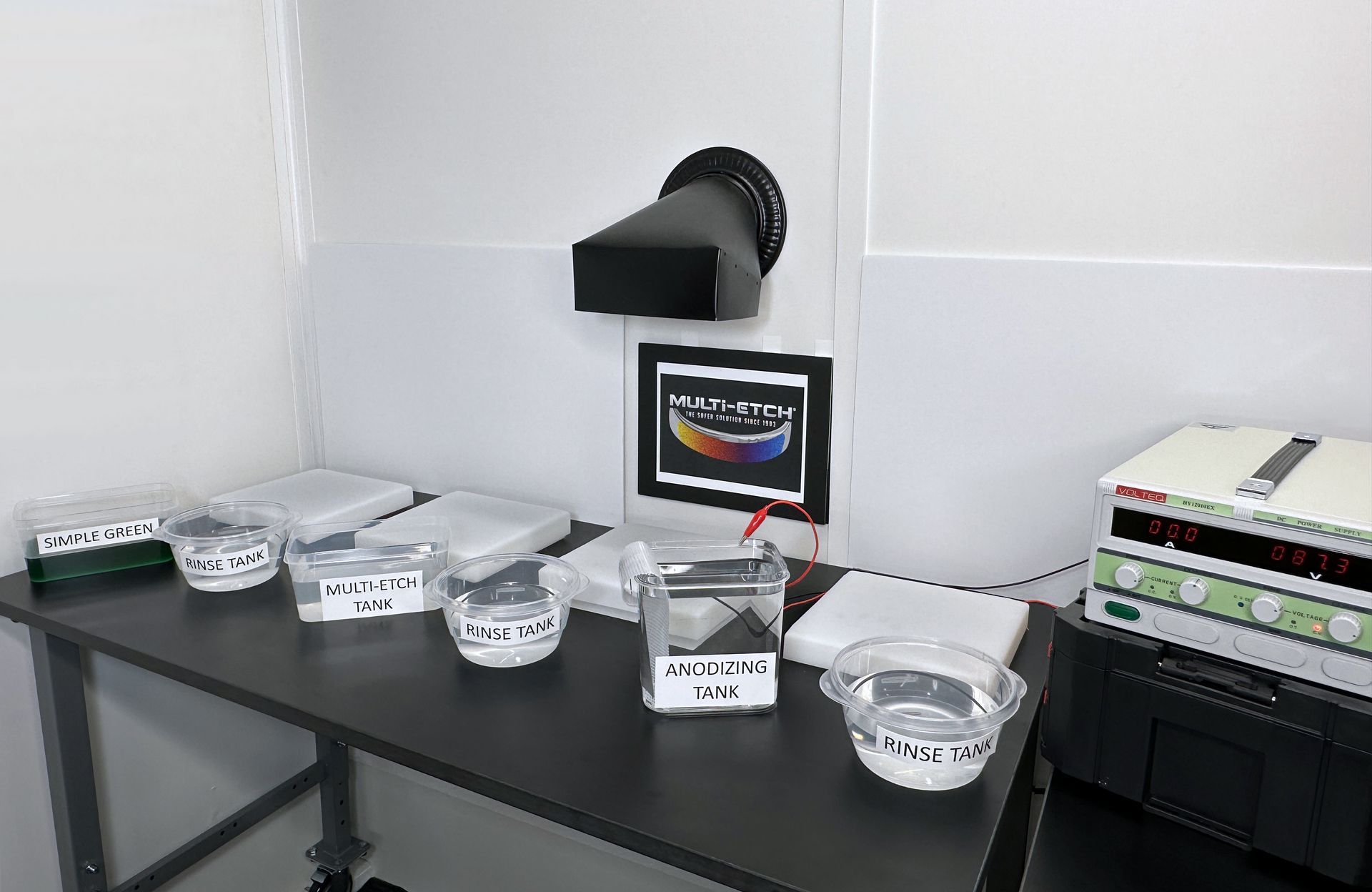
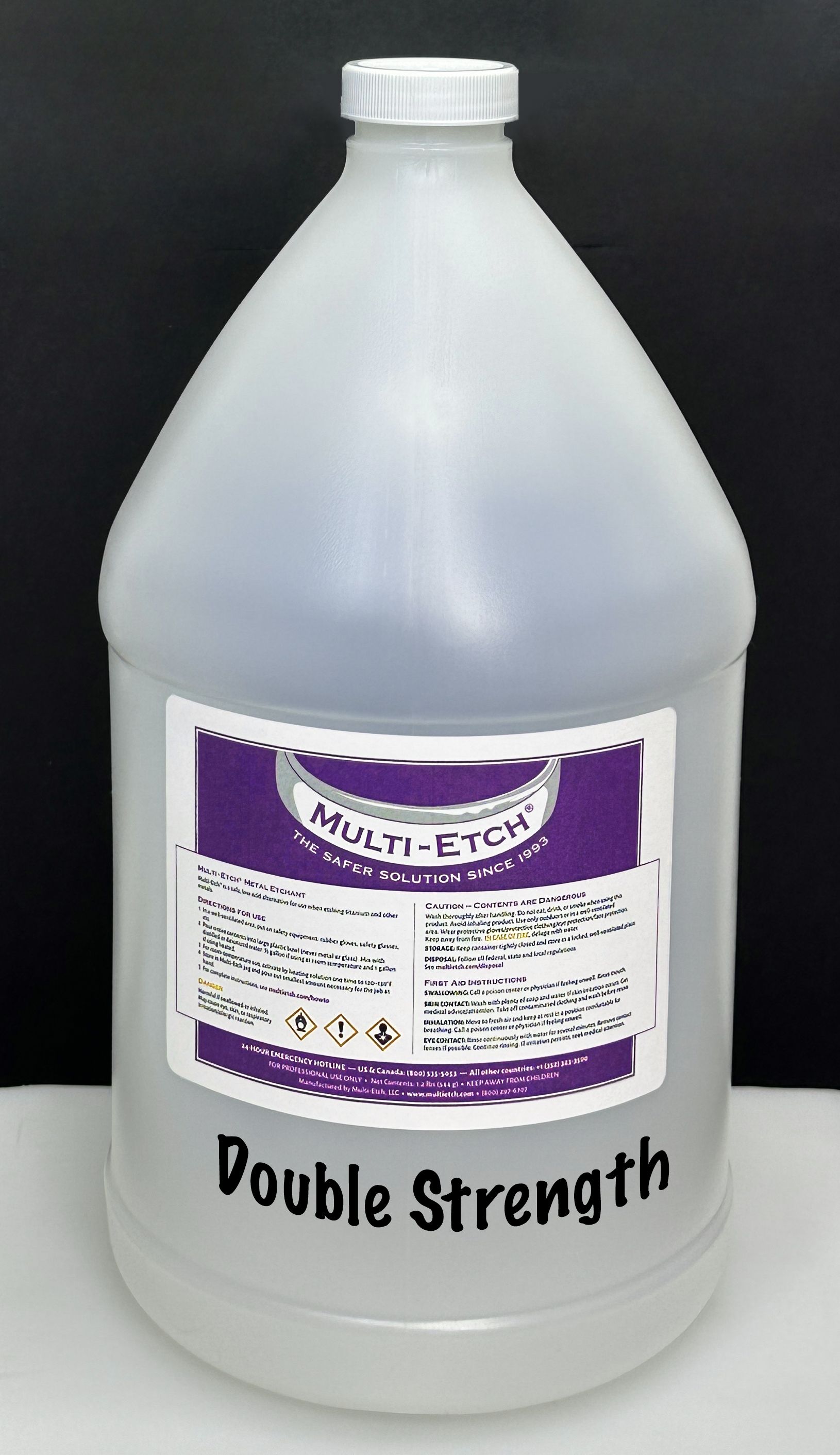
DOUBLE STRENGTH REQUIRED
In order to use Multi-Etch at room temperature - 70°F the etch bath must be mixed double strength and heated one time.
The simplest way to achieve this is to use our Multi-Etch jug or a robust polypropylene lidded bowl or similar container.
Store and use Multi-Etch in plastic containers, never in metal or glass. Mark the jug or bowl “Double-Strength Multi-Etch and “Poison.” If using a jug, make sure to have a Multi-Etch or similar funnel on hand.
THE PROCESS
STEP 1 - ACTIVATION
REQUIRED: When you first open your Multi-Etch bags you must activate for initial use. See Activation Instructions below.
STEP 2 - SAFETY EQUIPMENT
Put on goggles, gloves, etc. Set up your anodizing station close to where you will be etching. Do this with a fume hood operating, in a very well-ventilated area, or outdoors.
STEP 5 - ANODIZING
Anodize right away: set voltage to zero and ramp up slowly to the desired voltage/color.
STEP 6 - FINISHING
Rinse and dry to avoid water spots. If you're not ready to anodize, store the etched parts in distilled or deionized water to prevent reformation of the natural oxide layer.
ACTIVATING MULTI-ETCH - ROOM TEMPERATURE
Heat ½ gallon distilled or deionized water in a tea kettle to 150ºF and carefully pour into the bowl or, with a funnel, into the jug. Then, before opening the Multi-Etch package, carefully press out any lumps and then cut open the package and slowly pour the Multi-Etch powder into the water. Because the ingredients are not blended, you must mix the entire package.
Stir the powder in the bowl with a Multi-Etch polypropylene or other plastic stirrer until mostly dissolved and cover. If mixing in a jug, use the funnel while pouring the powder, cap and shake well. We recommend stirring or shaking the mixture every couple hours. Let mixture sit overnight and then it is ready to use.
You can also heat in a crock pot or a simple double boiler. Use plastics marked 5 or 7 for the container that holds the Multi-Etch.
We hope these steps helped you use our amazing product! If you had any issues please check out our Frequently Asked Questions or feel free to contact us with any concerns.
